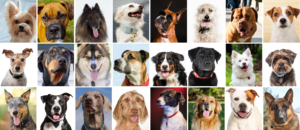To best understand this article in the context of the Breeds and Behavior literature, please see National Canine Research Council’s complete analysis here.
Svartberg, K. (2006). Breed-typical behaviour in dogs – Historical remnants or recent constructs? Applied Animal Behaviour Science, 96(3-4), 293-313. doi: https://doi.org/10.1016/j.applanim.2005.06.014
This study is included because it was the first large-scale attempt to investigate whether remnants of historical working behaviors could be identified in modern purebred breed groups. The study examines the conventional wisdom, among dog owners and academics alike, that a dog’s behavior is predictable because “his ancestors have been bred for hundreds of years to do that.” This study used a large sample size (N = 13,097) of dogs in Sweden (age 12-24 months) that had been tested on the Dog Mentality Assessment (DMA). The DMA includes 10 subtests in which dogs are placed in variable situations (e.g., being greeted by a stranger, the presentation of loud metallic noise or a gun shot, people draped in sheets emerging from behind trees, attempts to play tug-of-war, and passive activity) and their behavior is documented by an observer unfamiliar to the dog. Data were collected in Sweden over a five-year period (1997-2002). Breeds for which at least 40 dogs were tested were included in the study. This resulted in 31 breeds included, which were further grouped into five “breed groups” based on breed clubs: herding dogs, working dogs, terriers, hounds, and gun dogs.
The traits identified through factor analysis that were used as behavioral measures in this study were playfulness, curiosity/fearlessness, sociability, and aggressiveness. Aggressiveness is a surprising inclusion given that an earlier attempt to validate this variable by the same author had failed (Svartberg, 2005). This inclusion was defended as necessitated by the “relevance” of aggression as a trait, but this seems a weak justification when this test has been shown to be invalid for this trait.
The primary finding from this study was the lack of relationship between breed groups and behaviors the author deemed to be tied to the historical purposes of the terrier, working, herding, and gun dog groups (hounds were excluded). Svartberg (2006) argued that if historical behavior selections in breeding influence modern behavior, then there should be homogeneity within and differences between breed groups. The data did not support this hypothesis; no significant differences were found between breed groups for any of the traits studied. Furthermore, a cluster analysis for the personality traits showed a wide distribution of breed groups across the personality clusters. It is, of course, possible that the personality traits defined by the study (playfulness, curiosity/fearlessness, sociability, aggressiveness) are not actually linked to historically selected behaviors, many of which are based on predatory action patterns. The study did not consider this possibility.
https://www.sciencedirect.com/science/article/pii/S0168159105001607
Svartberg, K. (2005). A comparison of behaviour in test and in everyday life: evidence of three consistent boldness-related personality traits in dogs. Applied Animal Behaviour Science, 91(1), 103-128.
Page last updated July 16, 2019





